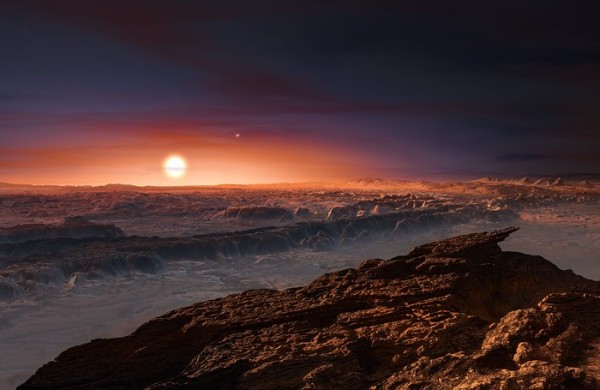By Ana Verayo, | September 07, 2016

Earth, Aliens
A new exoplanet discovery was announced late last month, as scientists believe that Proxima b, the closest planet to the solar system, also apparently has the potential to support life. In a new study, this recent discovery has been confirmed that this alien world can hold microbial life.
Scientists from the European Southern Observatory detected this exoplanet at a distance of four light years away, estimated to possess a mass 30 percent greater than our planet.
Like Us on Facebook
Proxima b also orbits its host star which is a red dwarf star known as Proxima Centauri, within a period of 11.2 days. Scientists have yet to determine how big it is along with its density, but since it is located in the "habitable zone" of its system, water can potentially exist on its surface.
According to Mikko Tuomi from the University of Hertfordshire in the U.K., all we know about Proxima b is that it also shares similar features with our planet, hinting at a life-friendly world.
Its similar mass also provides clues that it is a rocky planet like Earth, including a possible radius just slightly greater than our planet, says Tuomi.
Scientists also say that there are still many unknown physical properties of Proxima b, where they also speculate that its surface temperature could be slightly lower than Earth's. A bigger mass density also suggests a denser atmosphere that can result in a greater greenhouse effect than our planet.
Scientists are also hoping that its location from its system can produce the right geochemical conditions and processes to create water, that can later generate microbial life. They also add that surface temperature also plays a crucial role in turning liquid water along with producing carbon dioxide, which are all necessary for life.
Tuomi adds that all these ingredients for life are most likely present on Proxima b, that are all essential to trigger biochemical processes. He also adds, this exoplanet is also so unique that it can be reachable by humans with future interstellar missions, unlike Earth-like planets detected by the Kepler Space Telescope which are hundreds of light years away.
-
Use of Coronavirus Pandemic Drones Raises Privacy Concerns: Drones Spread Fear, Local Officials Say

-
Coronavirus Hampers The Delivery Of Lockheed Martin F-35 Stealth Fighters For 2020

-
Instagram Speeds Up Plans to Add Account Memorialization Feature Due to COVID-19 Deaths

-
NASA: Perseverance Plans to Bring 'Mars Rock' to Earth in 2031

-
600 Dead And 3,000 In The Hospital as Iranians Believed Drinking High-Concentrations of Alcohol Can Cure The Coronavirus

-
600 Dead And 3,000 In The Hospital as Iranians Believed Drinking High-Concentrations of Alcohol Can Cure The Coronavirus

-
COVID-19: Doctors, Nurses Use Virtual Reality to Learn New Skills in Treating Coronavirus Patients







